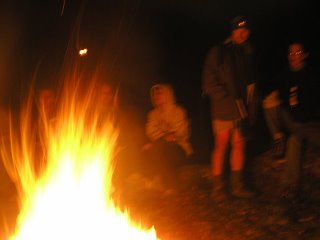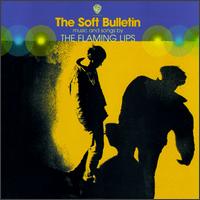
As the winter weather set in, I earned a reputation around campus because I advocated everyone at SIT burn their pants & dance at a bonfire party.
This may sound like a crazy idea, but there was logic behind my lunacy, and I just submitted this essay to our school paper in order to explain myself.
Why I Burned My Pants (And Danced)
Over the past few weeks, I conducted a social experiment on the campus of SIT called "Burn Your Pants & Dance." I advocated students burn their pants at a bonfire party, and now, after a few days of reflection, I want to explain why.
I love SIT; I love the various people. I revel in the diversity and knowing that this campus and its myriad of personalities have the potential to make a deep positive impact on the world. This idea alone helps me wake up for my 8:30am classes.
With that said, I feel it is necessary to address an underlying aspect of our campus. Everyday we send emails to inform about various religious holidays, sexual orientation parties, and immigration action meetings. These are all very serious topics. In some parts of the world these are a hotbed of discussion that create major turmoil and it’s just the stuff piling up day-to-day in our email Inbox! This is the reality we live in at SIT.
In an effort to combat the level of daily seriousness, lighten the mood, bring some kind of balance to our campus, and shed the proverbial PC layer that keeps building up, I sent, what I thought, was a humorous email. I advocated that everyone burn their pants at the next bonfire party. Burning pants, to my knowledge, does not infringe on anyone's religious beliefs, sexual orientation, nor does it have anything to do with immigration. It simply targets the opposite end of the contextual spectrum, and if you feel so inclined, it could be seen as a symbolic gesture.
The reactions from campus I received for doing this ridiculous thing are very interesting to me, and I actually feel I learned a lot about diversity and acceptance. I can separate the responses into three contrasting categories that I call the Partiers, the Questioners, and the Silencers. The Partiers' reaction was the most entertaining to me. They just laughed at me, gave me high fives for doing something silly, pointed and yelled in unquestioning solidarity "Burn your pants!"
The reaction of the Questioners was a little more interesting to me. They laughingly approached me and asked, "You want me to do what!?" "Why do you want me to burn my pants?" To them, I tried to explain the idea of a group of people working towards world peace standing around a bonfire in their underwear seems like a hilarious concept, and one I want to put into action because of the novelty. Can you imagine sitting in a conflict transformation class, looking over at your classmates during an intense debate, and realizing they were standing around in the cold in their underwear with you last week? It would have to put a different perspective on things, not to mention the bonds and the memories that would be formed by doing something so simple.
A slightly different, but frequent, response I heard from the Questioners was, "I like my pants, and I don't have any pants to burn," or, "I would rather donate my pants to the homeless." For this, I suggested they go to a thrift store, donate to the local economy, and buy a pair of pants that expressed who they were, or a pair they felt was begging to be burned because of the hideousness of the pattern. To me, this made sound sense.
The third and final reaction, from the Silencers, was one I least expected, but one that assisted my learning the most. I categorize this response as peoples' total silence or aloofness to my absurd request. I could overhear the Silencers whispering at lunch tables, "I can’t believe he did that. It’s completely inappropriate." The most hurtful response I heard came straight to my face. A person looked me in the eye and bluntly said, "I don’t get you." I do not know what that person meant, but it felt like they were trying to distance themself from me because they didn't understand where I was coming from. This reaction was most surprising because I didn't expect it on SIT's campus.
The heaviness of these reactions hit me like a lightning bolt as I was standing around under the stars in my underwear. If I got reactions like this from people on our campus for making and following through on a preposterous request about burning pants at a party, I can not imagine the reactions that someone might get for making serious statements they wholeheartedly believe in that might not fit with our societal norms.
Of all the places in the world that can benefit from political incorrectness, it is SIT. Our mission is world peace, but how can we work towards such a goal if we continue to shroud our language and actions in a polite, but lifeless, manner because we fear we might be misunderstood? I think we need to expose ourselves to draw out feelings that might be deemed incorrect, so we can look at them objectively, and analyze why we feel that way.
Bob Dylan once sang, "You’re invisible now, you got too many secrets to conceal." Only when we open up our secrets, speak, and act from the heart, will it be possible to see the true differences between everyone on this campus. When that happens, we can start learning how to approach the real problems that arise, and take what we learn away from this tiny microcosm on a hilltop in Vermont and apply it to the rest of the world.
Now get out there and take your pants off!!








